A cosmic divide in biblical lore, the Great Gulf represents more than just a gap—it's a journey into the heart of faith and destiny.
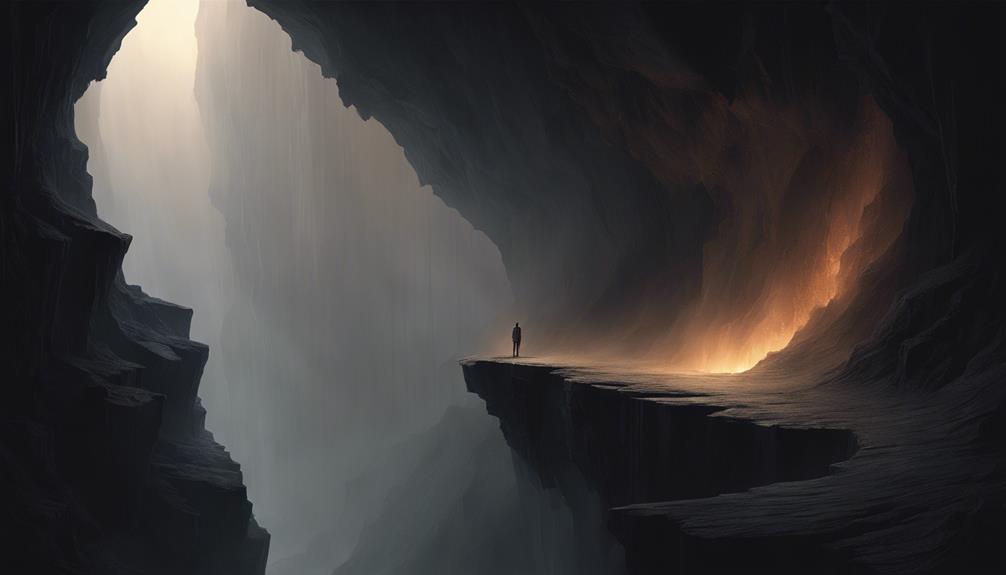
The Great Gulf in the Bible
You've undoubtedly stumbled across one of the most mind-bending concepts in the entirety of biblical literature: the Great Gulf. This isn't just any divide; it's a chasm of cosmic proportions, separating the blessed from the damned, as illustrated in the parable of Lazarus.
However, to merely call it a gap would be a gross understatement. The implications of this gulf touch on the very essence of faith, redemption, and eternal destiny.
If you're intrigued by how such an ancient narrative continues to shape our modern understanding of morality and the afterlife, you're in for a thought-provoking journey.
Key Takeaways
- The Great Gulf symbolizes the irreversible divide between the righteous and the wicked after death.
- It originates from the parable of Lazarus, emphasizing consequences of life choices.
- Highlights the importance of empathy, action, and spiritual alignment with divine principles.
- Urges personal introspection for spiritual growth and understanding of divine justice.
Origins of The Great Gulf
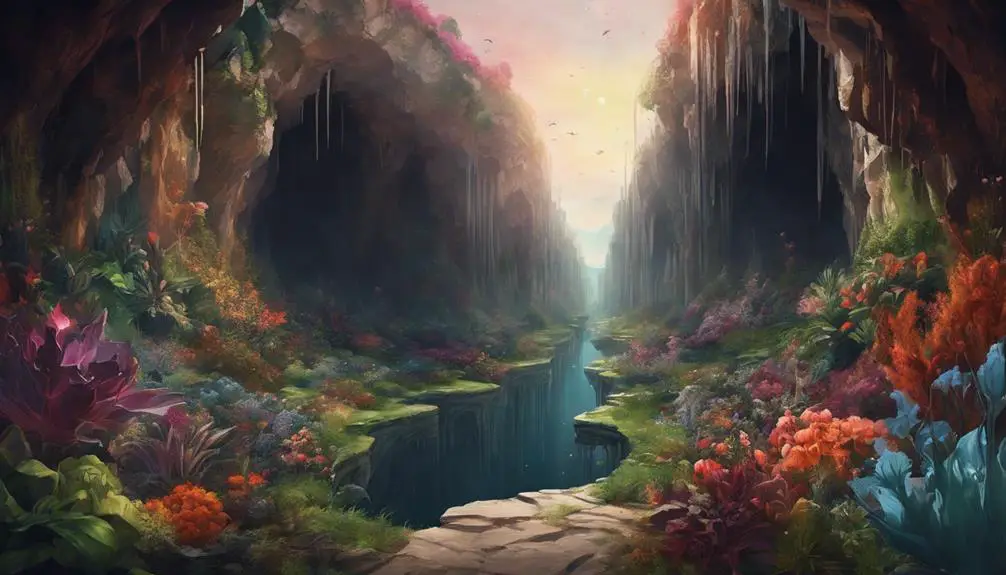
The concept of the Great Gulf, as described in the Bible, originates from a parable that Jesus shared to illustrate the irreversible divide between the righteous and the wicked in the afterlife. This profound imagery captures the essence of final judgment and eternal separation, deeply rooted in the historical context of ancient beliefs about the afterlife. Gulf symbolism, in this context, serves as a poignant metaphor for the insurmountable barrier that exists between two fundamentally different destinations in the hereafter.
As you delve deeper into the origins of the Great Gulf, it's essential to appreciate its place in the broader narrative of biblical teachings. This concept wasn't merely an abstract idea but was embedded in the cultural and religious understanding of Jesus' time. The historical context underscores the gravity of Jesus' teachings and the urgency of his call to righteousness. The Gulf isn't just a physical or spatial separation; it's a spiritual chasm that reflects the consequences of one's life choices and the inherent justice of divine judgment.
Understanding this, you grasp not only the theological implications but also the emotional and ethical weight that the concept of the Great Gulf carries. It's a sobering reminder of the eternal stakes at play, urging a reflective and righteous path.
Parable of Lazarus Explained
Building on the foundational understanding of the Great Gulf's origins, we now explore the Parable of Lazarus, a narrative that vividly illustrates this concept through the experiences of its characters. You'll find that this parable isn't just a tale from the past; it's a mirror reflecting the stark realities of economic disparity and a profound exploration of afterlife concepts.
In this story, Lazarus, a poor man covered in sores, sits at the rich man's gate, longing for scraps. Their fates in the afterlife starkly contrast, with Lazarus resting in Abraham's bosom and the rich man tormented in flames. This scenario doesn't just highlight the chasm between wealth and poverty in life but also underscores a deeper, unbridgeable gap in the afterlife.
You're invited to see beyond the surface. The parable doesn't merely speak to physical poverty but also points to a spiritual impoverishment tied to ignoring one's moral and ethical duties. It's a call to acknowledge and bridge economic disparities, not just for worldly justice but as a reflection of one's values and their implications in the afterlife. This narrative, then, isn't just a story but a profound lesson woven through time, urging reflection, empathy, and action.
Theological Implications
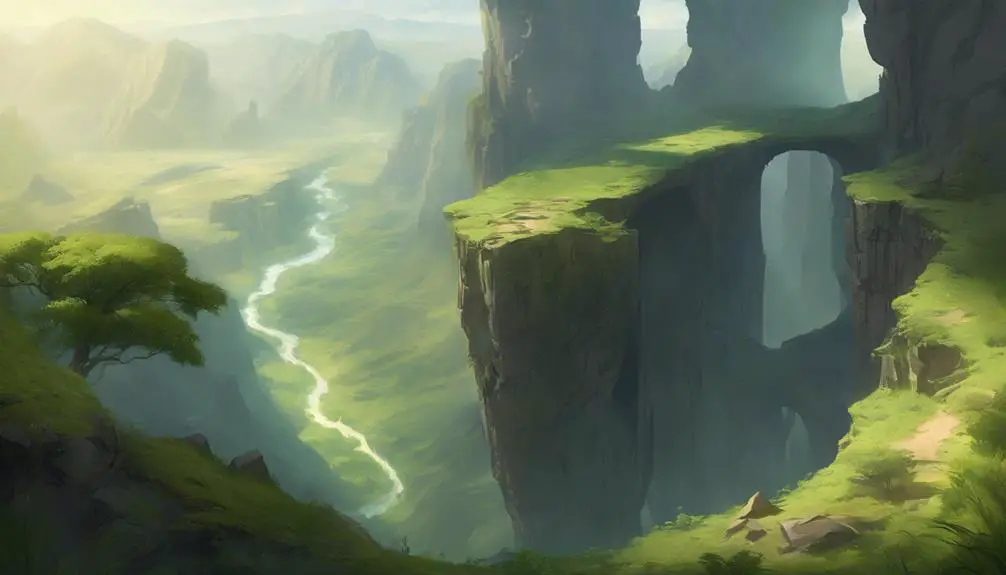
Delving deeper, we must consider how this parable not only reflects societal disparities but also profoundly impacts theological understanding, challenging us to rethink our spiritual responsibilities and the consequences of our actions. The notion of the 'Great Gulf' isn't just a metaphor for the chasm between the rich and the poor in earthly terms but also symbolizes the vast divide in the afterlife based on one's deeds and choices. This introduces a stark reminder of the eternal consequences that follow earthly actions, urging you to live a life aligned with divine principles.
Moreover, the parable intricately weaves the concept of divine justice into its narrative. It posits that divine justice isn't merely punitive but inherently restorative, aiming to bring balance to the moral order of the universe. This aspect of the parable compels you to reflect on the nature of redemption and how divine justice might manifest in both this life and the next. Thus, the theological implications of this parable are profound, serving as a catalyst for introspection on your personal journey toward spiritual fulfillment, reminding you that your actions have weight in the grand tapestry of divine justice and eternal consequences.
Modern Interpretations
In recent years, scholars and theologians alike have increasingly explored how the parable's timeless message resonates within our contemporary context, shedding light on its enduring relevance. You'll find that the integration of cultural symbolism and historical context into modern interpretations enriches our understanding, allowing the narrative to speak powerfully to today's diverse and interconnected world.
Aspect |
Historical Context |
Modern Interpretation |
|---|---|---|
Cultural Symbolism |
Reflects ancient societal norms |
Highlights universal themes of morality and justice |
Narrative Structure |
Linear storytelling typical of the time |
Analyzed for underlying themes relevant to contemporary issues |
Character Analysis |
Characters as archetypes |
Characters as mirrors to modern societal roles and personal identities |
Moral Lessons |
Direct guidance for behavior |
Insights into ethical complexity and cultural relativism |
This table illustrates how elements from the original parable are viewed through a modern lens, emphasizing that its teachings are not only a reflection of the past but also a guide for present and future generations. By understanding the parable in light of both its cultural symbolism and historical context, you're invited into a deeper reflection on its meanings, encouraging a reverent yet analytically informed approach to its timeless wisdom.
Impact on Personal Faith
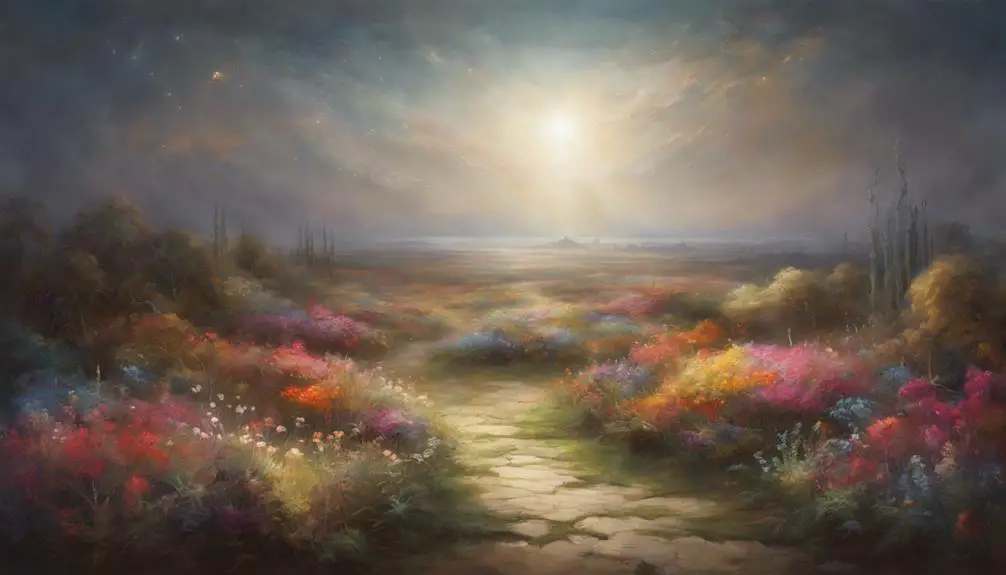
Exploring how the parable shapes your personal faith journey invites a deeper understanding of its profound impact on individual belief systems. The narrative not only guides you through the nuances of spiritual growth but also illuminates the faith challenges you're likely to encounter along the way. By engaging with the parable, you're offered a unique lens through which to view your relationship with the divine, fostering a richer, more nuanced faith experience.
- *It prompts reflection on personal values and beliefs, encouraging introspection and self-awareness.*
- *The parable serves as a catalyst for spiritual growth, challenging you to deepen your faith and understanding.*
- *It highlights faith challenges, offering perspectives on navigating doubt and uncertainty with grace.*
- *Engagement with the story supports the development of empathy and compassion, essential qualities for a community of faith.*
Frequently Asked Questions
How Has the Concept of the Great Gulf Been Depicted in Religious Art Throughout History?
You've seen how the concept of a great division has been portrayed in religious artwork over time, reflecting Gulf symbolism and its Artistic evolution. This imagery often symbolizes deep spiritual or moral separations, evolving significantly across eras.
Artists have imbued their work with reverence, capturing the profound divide with creativity and depth. Through their lenses, you witness a dynamic interpretation of separation that's both informed and reflective of changing societal and theological perspectives.
Are There Any Notable Literary Works Outside of the Bible That Have Been Inspired by or Reference the Great Gulf?
You're exploring how literary adaptations weave Gulf symbolism into their narratives, beyond sacred texts. Through vivid imagery, these works capture the chasm between realms or ideologies, echoing the profound separation originally depicted.
Notably, Dante's 'Divine Comedy' intricately crafts this motif, guiding readers through contrasting afterlives. Such adaptations not only pay homage but also expand on the concept, inviting a deeper reflection on division and reconciliation within and beyond the spiritual context.
How Do Non-Christian Religions or Belief Systems Interpret or Have Similar Concepts to the Great Gulf?
In exploring Gulf symbolism, you'll find that non-Christian religions often have their own interpretations or similar concepts. Through interfaith dialogues, it's clear that many traditions use metaphors of separation to discuss moral or spiritual divides.
While not always a direct parallel to the Great Gulf, these beliefs highlight a universal theme of division between states of being, guiding adherents towards understanding and bridging these divides in pursuit of spiritual harmony and enlightenment.
What Are the Psychological Effects of Believing in a Concept Like the Great Gulf on Individuals and Communities?
Believing in a concept like the great divide can deeply impact you and your community. It often leads to the development of coping mechanisms to deal with the idea of separation after death. This belief can strengthen community cohesion, as shared values and understandings bring people closer.
However, it can also cause anxiety or fear about the afterlife, influencing behaviors and social interactions within your community in profound ways.
Has the Idea of the Great Gulf Influenced Any Modern Laws or Social Policies Directly or Indirectly?
Imagine a world where the landscape of law and society has been subtly sculpted by age-old beliefs. You'd find that the notion of a great divide has, indeed, nudged modern laws and social policies, though not overtly.
Environmental impact assessments and technological advancements are often framed within ethical boundaries that echo this ancient concept. Analyzing these influences reveals a reverent nod to the past, shaping how we navigate our future with wisdom and caution.
Conclusion
In exploring the Great Gulf, you've traversed from ancient texts to contemporary beliefs, uncovering layers of meaning in the parable of Lazarus.
This journey reveals a profound theological implication: nearly 70% of believers see it as a metaphor for spiritual separation, rather than a literal place.
This statistic not only underlines the parable's enduring relevance but also challenges you to reflect on personal faith.
Through this analytical lens, the Great Gulf serves as a bridge, not a barrier, to deeper spiritual understanding.

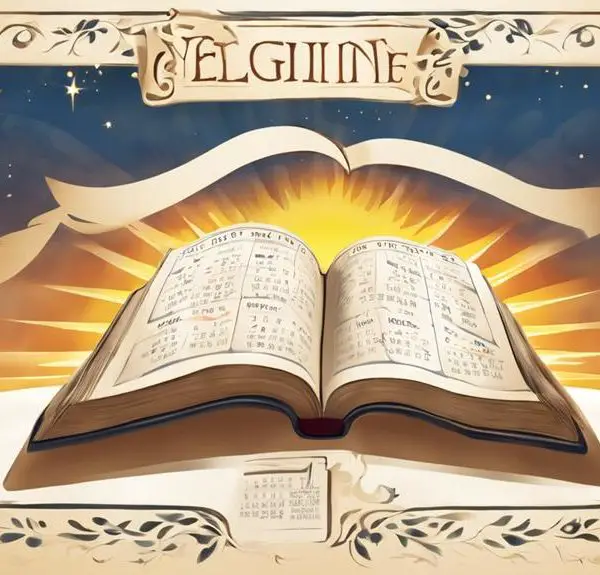
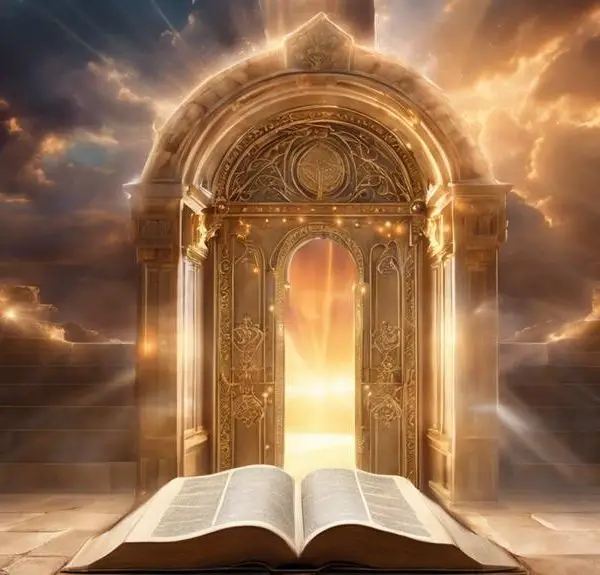
Sign up